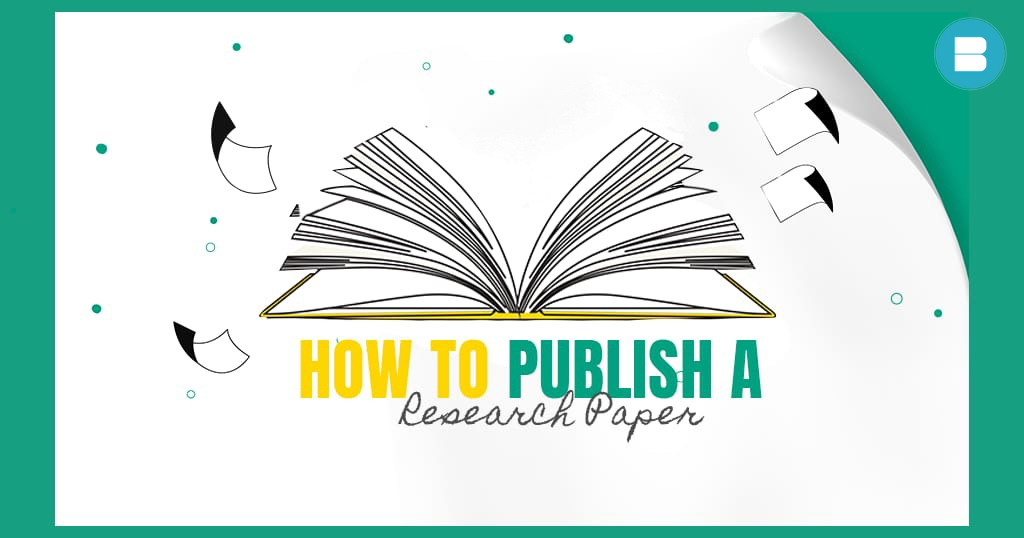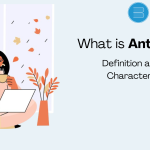Read: Learn How to Write & Craft a Compelling Villain for Your Story.Here’s a list of steps to keep in mind before publishing a research paper:
- Step 1: Identifying the Right Journal
- Step 2: Preparing Step 3: Your Manuscript
- Step 3: Conducting a Thorough Review
- Step 4: Writing a Compelling Cover Letter
- Step 5: Navigating the Peer Review Process
- Step 6: Handling Rejections
- Step 7: Preparing for Publication
- Step 8: Promoting Your Published Paper
Step 1: Identifying the Right Journal
The first step in publishing a research paper is crucial, as it sets the foundation for the entire publication process. Identifying the right journal involves carefully selecting a publication platform that aligns with your research topic, audience, and academic goals. Here are the key considerations to keep in mind during this step:
- Scope and Focus: Assess the scope and focus of your research to find journals that publish articles in your field of study. Look for journals that have previously published papers related to your topic or research area.
- Readership and Impact Factor: Consider the target audience of the journal and its readership. Higher-impact factor journals typically attract a broader readership and can enhance the visibility and credibility of your research.
- Publication Frequency: Investigate the publication frequency of the journal. Some journals publish issues monthly, quarterly, or annually. Choose a journal that aligns with your timeline for publication.
- Indexing and Reputation: Check if the journal is indexed in reputable databases, such as Scopus or PubMed. Indexed journals are more likely to be recognized and accessed by researchers worldwide.
- Journal Guidelines: Familiarise yourself with the journal’s submission guidelines, available on their website. Pay attention to manuscript length limits, reference styles, and formatting requirements.
- Open Access Options: Consider whether the journal offers open access publishing. Open-access journals allow unrestricted access to your paper, potentially increasing its visibility and impact.
- Ethical Considerations: Ensure the journal follows ethical publication practises and abides by industry standards. Verify if the journal is a member of reputable publishing organisations, such as COPE (the Committee on Publication Ethics).
- Publication Fees: Check if the journal charges any publication fees or article processing charges (APCs). These fees can vary significantly among journals and may influence your decision.
- Target Audience: Consider the journal’s target audience and the level of technical detail appropriate for that audience. Some journals cater to a more specialised readership, while others aim for a broader appeal.
- Journal Reputation: Research the reputation of the journal within your academic community. Seek advice from colleagues or mentors who have published in similar journals.
By carefully considering these factors, you can make an informed decision on the most suitable journal for your research paper. Selecting the right journal increases your chances of acceptance and ensures that your work reaches the intended audience, contributing to the advancement of knowledge in your field.
Step 2: Preparing Your Manuscript
After identifying the appropriate journal, the next step is to prepare your manuscript for submission. This stage involves meticulous attention to detail and adherence to the journal’s specific author guidelines. Here’s a comprehensive guide to preparing your manuscript:
- Read Author Guidelines: Carefully read and understand the journal’s author guidelines, which are available on the journal’s website. The guidelines provide instructions on manuscript preparation, the submission process, and formatting requirements.
- Manuscript Structure: Follow the standard structure for a research paper, including the abstract, introduction, methodology, results, discussion, and conclusion sections. Ensure that each section is clear and well-organised.
- Title and Abstract: Craft a concise and informative title that reflects the main focus of your research. The abstract should provide a summary of your study’s objectives, methods, results, and conclusions.
- Introduction: The introduction should introduce the research problem, provide context, and state the research objectives or questions. Engage readers by highlighting the significance of your research.
- Methodology: Describe the research design, data collection methods, and data analysis techniques used in your study. Provide sufficient detail to enable other researchers to replicate your study.
- Results: Present your findings in a clear and logical manner. Use tables, graphs, and figures to enhance the presentation of data. Avoid interpreting the results in this section.
- Discussion: Analyse and interpret your results in the discussion section. Relate your findings to the research objectives and previously published literature. Discuss the implications of your results and any limitations of your study.
- Conclusion: In the conclusion, summarise the key findings of your research and restate their significance. Avoid introducing new information in this section.
- Citations and References: Cite all sources accurately and consistently throughout the manuscript. Follow the journal’s preferred citation style, such as APA, MLA, or Chicago.
- Proofreading and Editing: Thoroughly proofread your manuscript to correct any grammatical errors, typos, or inconsistencies. Edit for clarity, conciseness, and logical flow.
- Figures and Tables: Ensure that all figures and tables are clear, properly labelled, and cited in the main text. Follow the journal’s guidelines for the formatting of figures and tables.
- Ethical Considerations: Include any necessary statements regarding ethical approval, conflicts of interest, or data availability, as required by the journal.
By meticulously preparing your manuscript and adhering to the journal’s guidelines, you increase the likelihood of a successful submission. A well-structured and polished manuscript enhances the readability and impact of your research, ultimately increasing your chances of acceptance for publication.
You may also like: How to Make Book Design More Appealing to the Reader
Step 3: Conducting a Thorough Review
The process of conducting a thorough review of your research paper is a critical step in the publication journey. This step ensures that your work is polished, accurate, and ready for submission to a journal. A well-reviewed paper increases the chances of acceptance and demonstrates your commitment to producing high-quality research. Here are the key aspects to consider during the review process:
- Grammatical Errors and Typos: Start by carefully proofreading your paper for any grammatical errors, typos, or spelling mistakes. Even minor errors can undermine the credibility of your research and distract readers from your main points. Use grammar-checking tools, but also read your paper line by line to catch any issues that zated tools might miss.
- Consistency and Clarity: Ensure that your writing is consistent throughout the paper. Check that you have used the same terminology, abbreviations, and formatting consistently. Additionally, pay attention to sentence structure and coherence, making sure that each paragraph flows logically into the next.
- Accuracy of Data, Graphs, and Tables: Review all the data presented in your research, including figures, graphs, and tables. Verify that the data is accurate, correctly labelled, and represented in a clear and understandable manner. Any errors in data representation can lead to misinterpretations and undermine the reliability of your findings.
- Citation and Referencing: Verify that all the sources you have cited are accurate and properly formatted according to the citation style required by the target journal. Missing or incorrect citations can lead to accusations of plagiarism and harm the integrity of your work.
- Addressing Feedback: If you have received feedback from colleagues, mentors, or peer reviewers during the pre-submission process, carefully consider their suggestions and address any concerns raised. Engaging with feedback shows your willingness to improve and strengthen your paper.
- Objective Evaluation: Try to read your paper with a critical eye, as if you were a reviewer assessing its merits. Identify any weaknesses or areas that could be improved, both in terms of content and presentation. Be open to rewriting or restructuring sections that could benefit from further clarity or depth.
- Seek Feedback: To ensure the highest quality, seek feedback from colleagues or mentors who are knowledgeable in your research field. They can provide valuable insights and offer suggestions for improvement. Peer review can identify blind spots and help you refine your arguments.
- Formatting and Guidelines: Review the journal’s specific formatting and submission guidelines. Adhering to these requirements demonstrates your attention to detail and increases the likelihood of acceptance.
In conclusion, conducting a thorough review of your research paper is an essential step before submission. It involves checking for grammatical errors, ensuring clarity and consistency, verifying data accuracy, addressing feedback, and seeking external input. A well-reviewed paper enhances its chances of publication and contributes to the overall credibility of your research.
Step 4: Writing a Compelling Cover Letter
The cover letter is your opportunity to make a strong first impression on the journal’s editor and to persuade them that your research paper is a valuable contribution to their publication. It serves as a bridge between your work and the editor, highlighting the significance and originality of your study and explaining why it is a good fit for the journal. Here are the key elements to include in a compelling cover letter:
- Introduction: Start the letter with a professional and cordial greeting, addressing the editor by their name if possible. Introduce yourself and provide your affiliation, including your academic title and institution. Mention the title of your research paper and its co-authors, if any.
- Brief Summary of Research: Provide a concise and compelling summary of your research. Clearly state the research question or problem you addressed, the methodology you employed, and your main findings. Emphasise the significance of your research and its potential impact on the field.
- Highlight Originality: Explain what sets your study apart from existing research in the field. Highlight the original contributions your paper makes, whether it’s a novel approach, new insights, or addressing a gap in the literature. Demonstrating the novelty of your work will capture the editor’s attention.
- Fit with the Journal: Explain why your research is a good fit for the target journal. Refer to recent articles published in the journal that are related to your topic and discuss how your research complements or extends those works. Aligning your paper with the journal’s scope and objectives enhances your chances of acceptance.
- Addressing Specific Points: If the journal’s author guidelines include specific requirements, address them in your cover letter. This shows that you have read and followed their guidelines carefully. For example, if the journal requires you to highlight the practical implications of your research, briefly mention these in your letter.
- Previous Engagement: If you have presented your research at a conference, workshop, or seminar, or if it has been previously reviewed (e.g., as a preprint), mention it in the cover letter. This indicates that your work has already undergone some scrutiny and may strengthen its appeal to the journal.
- Declaration of Originality: State that the paper is original, has not been published elsewhere, and is not under simultaneous consideration by any other publication. This declaration reassures the editor that your work meets the journal’s submission policies.
- Contact Information: Provide your contact details, including email and phone number, and express your willingness to address any queries or provide additional information if needed.
- Expression of Gratitude: Thank the editor for their time and consideration in reviewing your submission.
In conclusion, a well-crafted cover letter complements your research paper and convinces the journal’s editor of the significance and originality of your work. It should provide a succinct overview of your research, highlight its relevance to the journal’s scope, and address any specific points raised in the author guidelines. A compelling cover letter increases the likelihood of your paper being seriously considered for publication.
You may also like: International Publishing: Expanding Your Reach Beyond Borders
Step 5: Navigating the Peer Review Process
The peer review process is a crucial step in scholarly publishing, designed to ensure the quality, accuracy, and validity of research papers before they are accepted for publication. After you submit your manuscript to a journal, it is sent to peer reviewers who are experts in your field. These reviewers carefully assess your work, providing feedback and recommendations to the editor. Navigating the peer review process requires patience, open-mindedness, and a willingness to engage constructively with reviewers. Here’s a detailed explanation of this step:
- Submission and Assignment: Once you submit your paper, the journal’s editorial team performs an initial screening to check if it aligns with the journal’s scope and guidelines. If it does, the editor assigns peer reviewers who have expertise in the subject matter of your research.
- Reviewing Process: The peer reviewers evaluate your paper’s methodology, data analysis, conclusions, and overall contribution to the field. They may assess the clarity of your writing, the strength of your arguments, and the relevance of your findings. Reviewers also look for potential flaws or limitations in your study.
- Reviewer Feedback: After the reviewers have thoroughly examined your paper, they provide feedback to the editor. The feedback usually falls into three categories: acceptance, revision, or rejection. In the case of a revision, reviewers may specify the changes they believe are necessary for the paper to meet the journal’s standards.
- Editor’s Decision: Based on the reviewers’ feedback, the editor makes a decision about your paper. The decision could be acceptance, conditional acceptance pending minor revisions, major revisions, or rejection. Even if your paper is rejected, remember that the peer review process provides valuable feedback that can help improve your research.
- Responding to Reviewer Comments: If your paper requires revisions, carefully read the reviewer comments and suggestions. Address each comment in a respectful and diligent manner, providing clear responses and incorporating the necessary changes into your manuscript.
- Revised Manuscript Submission: Submit the revised version of your paper along with a detailed response to the reviewers’ comments. Explain the changes you made and how you addressed their concerns. This demonstrates your commitment to enhancing the quality of your research.
- Reiteration of the Review Process: Depending on the revisions, the editor may send your paper back to the same reviewers or to new reviewers for a second round of evaluation. This process continues until the paper is either accepted for publication or deemed unsuitable for the journal.
- Acceptance and Publication: If your paper successfully navigates the peer review process and meets the journal’s standards, it will be accepted for publication. Congratulations on reaching this milestone!
In conclusion, the peer review process is an essential part of academic publishing. It involves expert evaluation of your research by peers in the field, who provide valuable feedback to improve the quality and rigour of your paper. Embrace the feedback with an open mind, respond diligently to reviewer comments, and be patient during the review process. Navigating peer review is a collaborative effort to ensure that only high-quality and significant research contributes to the scholarly community.
Step 6: Handling Rejections
Receiving a rejection of your research paper can be disheartening, but it is a common and normal part of the publication process. It’s important to remember that rejection does not necessarily reflect the quality of your work; many groundbreaking studies have faced rejection before finding the right publication platform. Handling rejections requires resilience, a growth mindset, and the willingness to learn from the feedback. Here’s a comprehensive explanation of this step:
- Understanding the Decision: When you receive a rejection, take the time to carefully read the editor’s decision letter and the feedback provided by the peer reviewers. Understand the reasons for the rejection and the specific concerns raised about your paper.
- Embrace Constructive Feedback: Peer reviewer comments can provide valuable insights into the strengths and weaknesses of your research. Embrace the feedback constructively, recognising that it presents an opportunity to improve your work.
- Assessing Revisions: If the decision letter includes suggestions for revisions, carefully consider whether you agree with them. Evaluate if implementing these revisions aligns with your research goals and the core message of your paper.
- Revising the Manuscript: If you decide to make revisions based on the feedback, thoroughly address the reviewer’s comments and consider making any necessary improvements to your research. Pay close attention to the areas identified by the reviewers as needing improvement.
- Resubmission or Alternative Journals: After revising your manuscript, you have the option to either resubmit it to the same journal (if allowed) or consider submitting it to a different journal. If you choose the latter, ensure that the new journal aligns with your research topic and scope.
- Tailoring the Submission: When submitting to a different journal, tailor your manuscript and cover letter to fit the specific requirements and preferences of that journal. Highlight the relevance of your research to the journal’s readership and address any unique guidelines they have.
- Don’t Lose Hope: Rejections are a natural part of the publication process, and many researchers face them at some point in their careers. It is essential not to lose hope and to remain persistent in pursuing publication opportunities.
- Learn and Improve: Use the feedback from the rejection as a learning experience. Identify areas for improvement in your research, writing, and presentation. This will help you grow as a researcher and improve your chances of acceptance in the future.
- Seek Support and Guidance: If you are struggling to navigate the publication process or interpret reviewer comments, seek support from colleagues, mentors, or academic advisors. Their insights can provide valuable guidance and encouragement.
In conclusion, handling rejections is a normal part of the publication journey. Approach rejection with a growth mindset, embracing the feedback provided by reviewers as an opportunity to improve your research. Revise your manuscript diligently, and consider submitting it to other journals that align with your research. Remember that persistence, learning from feedback, and seeking support are key to achieving success in the scholarly publishing process.
Unlocking Success: How to Sell Books Online Effectively
Step 7: Preparing for Publication
After successfully navigating the peer review process and receiving acceptance for your research paper, you are one step closer to seeing your work published in a reputable journal. However, before your paper can be published, you need to prepare it for production according to the journal’s specific requirements. This step is essential to ensuring that your paper meets the journal’s formatting and style guidelines and is ready for dissemination to the academic community. Here’s a comprehensive explanation of this step:
- Reviewing the Acceptance Letter: Start by carefully reviewing the acceptance letter from the journal’s editor. This letter will outline any final comments or suggestions from the reviewers that need to be addressed before publication.
- Addressing Reviewer Comments: If there are any outstanding revisions or clarifications requested by the reviewers, address them promptly and thoroughly. Reviewer feedback plays a crucial role in enhancing the quality and clarity of your paper, so it’s essential to give each comment due attention.
- Adhering to Journal Guidelines: Familiarise yourself with the journal’s production requirements and guidelines for formatting, referencing, and figure preparation. Ensure that your paper adheres to these guidelines to avoid delays in the publication process.
- Finalising the Manuscript: Once all revisions have been made and the paper aligns with the journal’s requirements, finalise your manuscript. Carefully proofread the entire paper to catch any remaining grammatical errors or typos.
- Handling Permissions and Copyright: If your paper includes copyrighted material (e.g., figures, tables, or excerpts from other publications), obtain permission from the original copyright holders to reproduce that content in your paper. This is crucial to avoid potential copyright infringement issues.
- Completing Authorship and Affiliation Details: Verify that all authors’ names, affiliations, and contact information are accurate and consistent. Ensure that the corresponding author is clearly identified for communication with the journal during the publication process.
- Submitting the Final Manuscript: Follow the journal’s instructions to submit the final version of your manuscript along with any required supplementary materials. This may include high-resolution figures, data sets, or additional supporting information.
- Waiting for Publication: After submitting the final version, the journal’s production team will work on typesetting, formatting, and preparing your paper for publication. This process may take some time, depending on the journal’s workflow and schedule.
- Proofing and Corrections: Once the typeset proof is ready, carefully review it for any formatting errors or typographical mistakes. Respond to the journal promptly with any necessary corrections or clarifications.
- Copyright Transfer: If required by the journal, complete the copyright transfer agreement, granting the publisher the right to publish and distribute your work.
- Publication Date and DOI: Your paper will be assigned a publication date and a Digital Object Identifier (DOI), a unique alphanumeric string that provides a permanent link to your paper, making it easily accessible and citable.
In conclusion, preparing your research paper for publication involves carefully addressing reviewer comments, adhering to journal guidelines, handling permissions and copyright issues, and submitting the final version for production. Thoroughly reviewing and finalising your paper will ensure its readiness for dissemination to the academic community.
Step 8: Promoting Your Published Paper
Congratulations on successfully publishing your research paper! Now, it’s time to promote your work to reach a broader audience and increase its visibility within the academic and research communities. Effective promotion can lead to more citations, recognition, and potential collaborations. Here’s a comprehensive explanation of this step:
- Share on Social Media: Utilise social media platforms to announce the publication of your paper. Share the title, abstract, and a link to the paper on your professional profiles, such as LinkedIn, Twitter, or ResearchGate. Engage with your followers to generate interest and discussion.
- Collaborate with Colleagues: Collaborate with your co-authors and colleagues to promote the paper collectively. Encourage them to share the publication on their social media and academic networks. A collaborative effort can increase the paper’s visibility and reach.
- Academic Networks and Research Platforms: Upload your paper to academic networks and research platforms like Academia.edu, Mendeley, or Google Scholar. This allows other researchers to discover and cite your work more easily.
- Email and Newsletters: Inform your professional contacts and research network about the publication through email announcements or newsletters. Consider writing a brief summary of your paper’s key findings and significance to entice readers to access the full paper.
- Research Blog or Website: If you have a personal research blog or website, create a dedicated post announcing the publication. Provide a summary of your research and its implications in a reader-friendly format.
- Engage with the Academic Community: Participate in academic conferences, workshops, and seminars to present your research. Networking with other researchers and sharing your findings in person can create buzz around your paper.
- Press Releases: If your research has practical implications or societal relevance, consider working with your institution’s press office to issue a press release about your paper. This can attract media attention and increase public awareness.
- Academic and Research Forums: Engage in online academic and research forums to discuss your findings and share insights. Be active in relevant discussions to establish yourself as an expert in your field.
- Researcher Profiles: Keep your researcher profiles, such as those on Google Scholar, ORCID, and Scopus, updated with your latest publications. This ensures that your paper is indexed and visible to other researchers searching for related work.
- Altmetrics: Monitor the altmetrics of your paper to track its online attention, including mentions, downloads, and social media shares. Altmetrics provide additional metrics beyond traditional citations, giving you insights into your paper’s broader impact.
- Engage with Feedback: Respond to comments and questions from readers who engage with your paper. Engaging in scholarly discussions can further promote your work and demonstrate your expertise in the field.
In conclusion, promoting your published paper is an essential step to increasing its visibility, impact, and potential for further collaboration. Utilise social media, academic networks, collaborations with colleagues, and engagement with the academic community to create interest in your work. Effective promotion can lead to more citations and recognition, enhancing the overall impact of your research.
Read: Here’s a list of 10 best short story books to read in 2023 that you can’t miss.
Publishing a research paper is a rewarding experience that requires dedication, perseverance, and attention to detail. By following this essential guide, you can navigate the publication process successfully and contribute valuable knowledge to your field of study.
Remember, each publication is a stepping stone in your academic journey, and even rejections provide opportunities for growth. Embrace the process, continue refining your research, and celebrate your contributions to advancing scientific knowledge. Good luck on your journey to academic success!
















